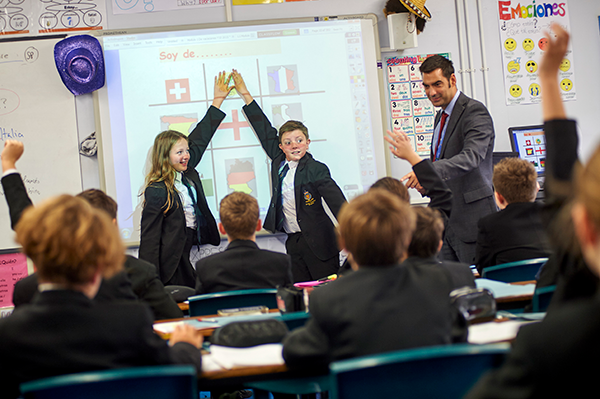Case study: Learning together to bridge the maths transition gap

Case study: Learning together to bridge the maths transition gap
Primary and secondary maths teachers have been learning from each other in a MAT-wide project that is having an encouraging impact on pupils’ outcomes. Yvonne Gandy finds out more.
A professional development programme helped to kick-start Lorraine Hughes’ thinking about the maths curriculum for pupils across the Chiltern Learning Trust.
As part of a National Professional Qualification in Executive Leadership (NPQEL) project, Ms Hughes, who is the director of education at the 11-school multi-academy trust based in and around Luton, created an initiative to improve maths transition from key stages 2 to 3.
She explained: “Pupils were achieving great outcomes at key stage 4 but there was a dip following the transition from key stages 2 to 3. We wanted to emulate the great maths teaching practice we found in primaries, so we asked our primary and secondary maths teachers to ‘buddy up’ and learn from each other.
“The difference in the level of challenge and the style of pedagogy is very different for pupils only six weeks apart in their education, as they make the transition from primary to secondary school, and this project aimed to bridge that gap.”
The project began with learning walks to observe maths teaching in the trust’s primary and secondary schools as well as those in a neighbouring MAT.
Ms Hughes created a project team made up of leaders and teachers from across the network to analyse maths results in year 6 and 7. The group’s conclusion was that a sharper focus on planning for progression from key stages 2 to 3 and varied pedagogy would improve attainment in both years 6 and 7.
The group met with leaders, observed teachers, talked to pupils and scrutinised their work. Ms Hughes says that the project was about finding the practice that worked in each classroom, spotting themes across the trust, and then using this learning to establish strategies that could work for every class.
She explained: “We viewed each school and each classroom as unique, where teachers were continually evaluating strategies in their own context, so our focus was to ask them and the pupils what worked.”
While the project was focused on finding and sharing best practice within the network, Ms Hughes and her team needed a detailed understanding of what the latest research said about high-quality maths practice so that the project team could compare this against what they found across the network. This high-quality practice included questioning, peer learning, discussion, manipulatives and representations, modelling, scaffolding and continuous assessment.
The project team’s research and regular reviews helped them to identify the most effective practice across the trust, which was then shared and trialled by other teachers. Teachers also observed each other during these trials and reported back to the project team. If the new practice was effective it was introduced into secondary classrooms. Changes to teaching practice have included the teaching of manipulatives, which is now commonly used across the trust’s secondary classrooms. And there have been a range of improvements in development plans, schemes of learning and pedagogy.
The impact of the project is already emerging, despite the disruption created by the pandemic. Pupil progress and attainment has been boosted across the trust’s schools, with one primary improving its scaled scores by more than 1.5 and a secondary seeing a 2.9 per cent improvement in year 7 attainment.
Some end-of-year assessments could not go ahead because of Covid so schools carried out parental surveys instead. These revealed that nearly all parents said their child's maths had improved. Ms Hughes plans to share a detailed evaluation paper with staff, parents and pupils once the pandemic emergency is over.
The project has also left a lasting legacy, strengthening relationships between schools. “We have learnt from practices in each other’s schools despite our different contexts and built lasting relationships,” Ms Hughes added.
And the joint practice approach developed by Ms Hughes and her colleagues has led to the creation of a parallel maths project across the trust led by the directors of maths, using observation and work scrutiny for moderation and quality assurance.
For Ms Hughes, the project is a great example of what Professor Michael Fullan has repeatedly referred to as the “the power of collective capacity”.
Yvonne Gandy is programme director of the National Professional Qualifications at Best Practice Network, which supports Outstanding Leaders Partnership to deliver the four National Professional Qualifications for school leaders. More information is available at www.outstandingleaders.org and www.bestpracticenet.co.uk.
